Ear infections also have another name, namely otitis. The ear consists of 3 parts; the outside (external ear canal or externa), the inside (inner ear or internals) and the middle part (middle ear or media). Between "externa" and "media" lies the eardrum. In otitis externa, the ear canal is inflamed outside of the eardrum, in otitis media, the inflammation is directly behind the eardrum. In otitis interna, the inflammation is very deep in the ear, and nerves are often affected.
What Causes Ear Infections in Rabbits?
Middle ear infections are often caused internally. This then happens through the Eustachian tube. This is a tube between the oral cavity and the middle ear ("media"). Bacteria such as Pasteurella multocida (see also "Snot in rabbits" in the animal health guide) can climb up to the middle ear and cause inflammation there.
A middle ear infection can also result from otitis externa. So if your rabbit has an infection of the external ear canal (the ear canal outside of the eardrum), it can penetrate through the eardrum. This is very rare in rabbits.
An inner ear infection (otitis interna) almost always results from a middle ear infection.
Can any rabbit get an ear infection?
Any rabbit can suffer from an ear infection. This can be done in one ear or both ears at the same time. Otitis externa is often present in lop-eared patients. This is because a rabbit's ear canal is relatively long and drooping ears make it a little too narrow. This makes it harder for earwax to escape and it stays in the ear canal longer. It is not a classic ear infection, but rather an infection caused by too much earwax. If your rabbit suffers from this on a regular basis, you can clean your rabbit's ears regularly with an ointment that thins earwax. This allows it to come out of the ear more easily.
Another common cause of otitis externa is mites, also known as ear itch.
How do I recognize ear infections in rabbits?
With an ear infection, your rabbit's ear may be red, pus may leak, and your rabbit's hearing may be impaired. Your rabbit can have an ear infection without symptoms, but it can also be very annoying. Your rabbit will then shake his head, scratch his ear, often eat less well (due to pain) and may have a bump just below his ear. This is quite unique in rabbits. You can develop a bump just behind the eye and below the ear (the base of the ear). Note: A bump in this area does not always mean your rabbit has an ear infection, other medical conditions can also be the cause!
An inner ear infection (otitis interna) often causes completely different problems, such as impaired balance and strabismus. Fortunately, that rarely happens.
How is an ear infection in a rabbit diagnosed?
An ear infection can be very persistent and quickly get out of control. So don't wait too long to see your vet. This only makes treatment more difficult, time-consuming and expensive. The sooner you solve the problem, the easier it is.
If you think your rabbit has an ear infection, your veterinarian will need to examine your rabbit's ear. There are special lights that allow your vet to see inside your rabbit's ear, even up to the eardrum. If your vet sees pus in your ear, they'll know right away that you have an ear infection. If the ear canal is clogged, the pus can no longer drain, it collects in the ear. At this point you can see "the bump" at the base of the ear that was discussed earlier.
How Are Ear Infections In Rabbits Treated?
First, your rabbit's ear needs to be rinsed clean. If this does not happen, the medication cannot develop its effect properly. Even if there is only wax in your rabbit's ear, the ear still needs cleaning. After your rabbit's ear has been thoroughly rinsed, you need to anoint the ear. Your veterinarian will give you an ointment that you have to spray into your ear once (sometimes twice) a day. Your vet will show you this the first time. In order to achieve sufficient results, one must persevere with this therapy for a long time. You should also visit your vet regularly to check that the ointment is working properly. Even if the symptoms have disappeared, it does not mean that the ear infection has also disappeared. It is very important not to stop the ear anointing too soon, otherwise the ear infection will come back immediately!
Occasionally it happens that the therapy does not work, an operation then remains the only possibility. Your vet will open your rabbit's ear to flush out all the pus. Not every vet can do that.
Can I Prevent Ear Infections in Rabbits?
As previously mentioned, an ear infection is often caused by Pasteurella. Therefore, it is very important to contact your veterinarian at the first symptoms of this disease. See also the article Snot in rabbits in the Rabbit Health Guide.
Otitis externa can also cause a middle ear infection. You should therefore check your rabbit's ears regularly and, if you have problems with too much earwax, make sure that it can be removed more easily. Never put a cotton swab in your rabbit's ear! This will only force the earwax into the ear more firmly, increasing the risk of an unsightly infection.
This text was translated by a translation machine
 Horse Pharmacy
Horse Pharmacy Rugs
Rugs Care
Care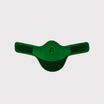 Saddle and Attachments
Saddle and Attachments Leg Protection
Leg Protection Bridles
Bridles Feed
Feed Fly Masks
Fly Masks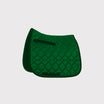 Saddle Pads
Saddle Pads Headcollars and Ropes
Headcollars and Ropes Bits
Bits Other Disciplines
Other Disciplines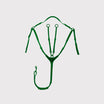 Reins and Auxiliary Reins
Reins and Auxiliary Reins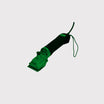 Clipping
Clipping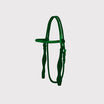 Western
Western Eventing
Eventing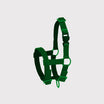 Foals
Foals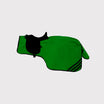 Reflection
Reflection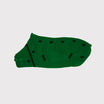 Therapy Products
Therapy Products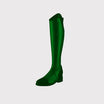 Boots and Shoes
Boots and Shoes Breeches and Belts
Breeches and Belts Tops
Tops Safety
Safety Competition
Competition Heated Clothing
Heated Clothing Gloves
Gloves Socks
Socks Spurs and Attachments
Spurs and Attachments Technology
Technology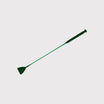 Whips
Whips Gifts
Gifts Casual Wear
Casual Wear Underwear
Underwear Rider Pharmacy
Rider Pharmacy Bags
Bags Books
Books Laundry supplies
Laundry supplies Jewelry
Jewelry Feed and Waterbowls
Feed and Waterbowls Equipment
Equipment Tack Room
Tack Room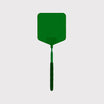 Pest Control
Pest Control Arena
Arena Horse Toys
Horse Toys Wheelbarrows
Wheelbarrows Yard
Yard Surveillance
Surveillance Disinfect
Disinfect Washing Area
Washing Area Lighting
Lighting Horse Pasture
Horse Pasture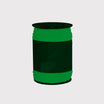 Current Conductors
Current Conductors Pole
Pole Insulators
Insulators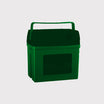 Energisers
Energisers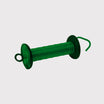 Gate Handles
Gate Handles Batteries and Accumulator
Batteries and Accumulator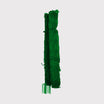 Nets
Nets Grounding
Grounding Tools
Tools Fencing Security
Fencing Security Wolf Defense
Wolf Defense Fencing Sets
Fencing Sets Fence locks
Fence locks Dogs
Dogs Cats
Cats Rodents
Rodents Dogs Pharmacy
Dogs Pharmacy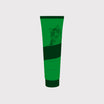 Cats Pharmacy
Cats Pharmacy Rodents Pharmacy
Rodents Pharmacy Cattle Pharmacy
Cattle Pharmacy Poultry Pharmacy
Poultry Pharmacy Veterinary Supplies
Veterinary Supplies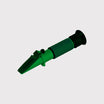 Cattle
Cattle Sheep and Goats
Sheep and Goats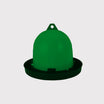 Poultry
Poultry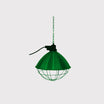 Heat Lamps
Heat Lamps Calves
Calves Marking
Marking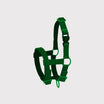 Halters
Halters